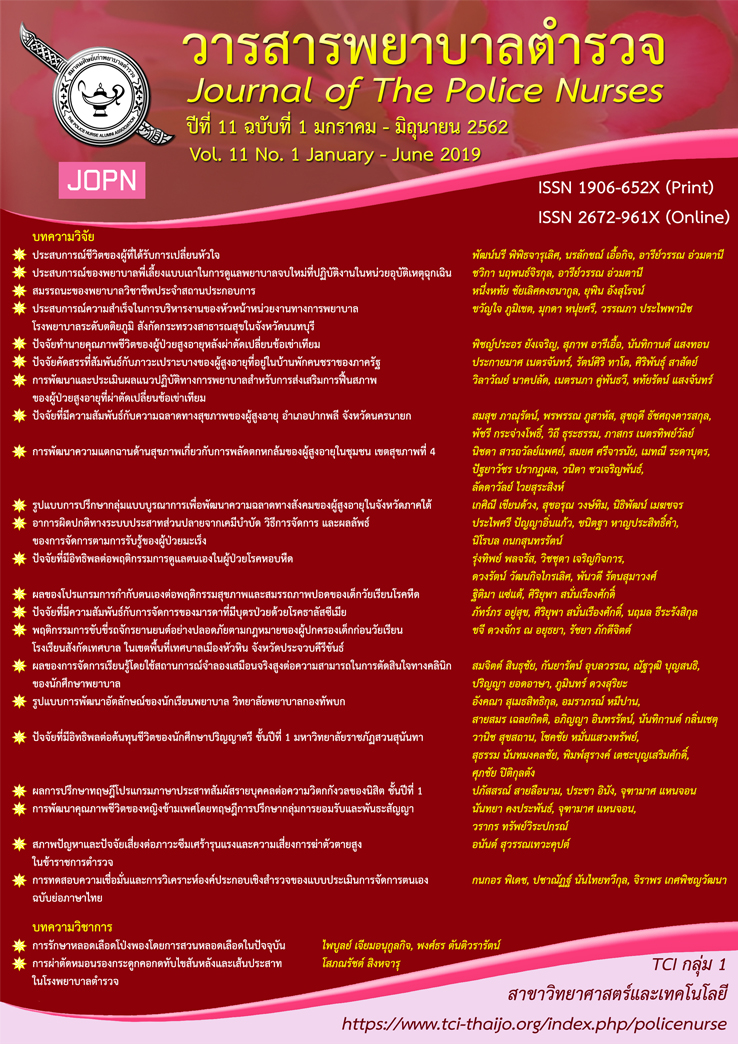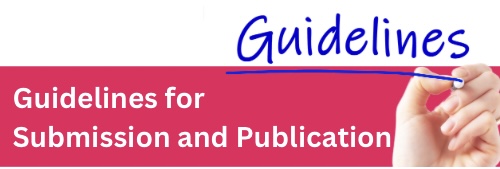COMPETENCIES OF INFIRMARY NURSE
Keywords:
competencies of infirmary nurseAbstract
The purposes of this research were to study the core competencies and sub- competencies of infirmary nurse. Subjects were 20 administrative experts with knowledge and experience of infirmary nurse. Descriptive research using Delphi technique was used. Three steps were designed to collect data. Step 1, all experts were interviewed regarding the competency of infirmary nurse. Step 2, interviewed data were analyzed by using content analysis in order to develop the competency of infirmary nurse questionnaire. Then, the questionnaire was sent to all experts to rate their opinions. Step 3, data were analyzed by using median and inter-quartile range. Then, the questionnaire with the median and inter-quartile range of each item was sent to all previous experts for their confirmation. Data were analyzed again using median and interquartile range to summarize the final findings.
The results showed that the competencies of infirmary nurse consisted of 6 domains, resulting in 38 items. They were 1) performance of basic medical care (9 items), 2) performance of monitoring- disease prevention and screening patients (5 items), 3) performance of salutary (8 items), 4) performance of strategic management and coordination management (7 items), 5) proactive performance of personal development (4 items), and 6) proactive performance of team development (5 items). Executives could use the results from this study to recruit, plan and develop competencies of infirmary nurse.
Downloads
References
Guo, K. L. (2009). Core competencies of the entrepreneurial leader in health care organizations. Health Care Manager, 28(1), 19-29.
International Council of Nurses. (2004). Guidelines on the nurse entre intrapreneur providing nursing service. Geneva, Switzerland: International Council of Nurses.
Kedmaro, J. (2556). Occupational health (2nd ed.). Bangkok: Ramkhamhaeng university.
Khongkhasawat, T. (2009). How to start when using competency in the organization. Bangkok: Technology Promotion Association (Thailand-Japan).
Kramer, M., & Schmalenberg, C. (1993). Learning from success: Autonomy and empowerment. Nursing management, 24(5), 58.
Krozek, C., & Scoogins, A. (1999). A organization – wide competency assessment policy amended to comply with 1999 JCAHO. Glendale, CA.
Power, L. (2005). Independent nursing practice: Getting started. Retrieved from https://www.arnnl.ca/ sites/default/files/RA_IndependentNursingPractice_Sept2005.pdf
Nursing Division. (2008). Main responsibilities and registered nurse competency. Nonthaburi: Nursing Division Department of Medical services, Ministry of Public Health.
Poothe, S. (2000). Job performance assessment of staff nurses in the central chest hospital (master of science in health administration). Mahidol university.
Rubino, L., & Freshman, F. (2005). Developing entrepreneurial competencies in the healthcare management undergraduate classroom. Journal of Health Administration Education, 22(4), 399-416.
Sadtragoolwatana, P. (2002). Managerial roles of nursing directors of general hospitals and regional and medical centers during health care reformera (Master of nursing science in nursing administration). Faculty of nursing, Chulalongkorn university, Bangkok, Thailand.
Social Security Office. (2013). Statistics of occupational hazards or illness 2552 - 2556. Retrieved from https://www.sso.go.th/wpr/uploads/uploadImages/file/accidentanalyze56.pdf
Srisatidnarakul, B. (2007). The methodology in nursing research. Bangkok: U and I Intermedia.
Taylor, K. (2000). Tackling the issue of nurse competency. Nursing management, 31(9), 34-37.
Wongpanit, M. (1999). Health and environment: Expert group of industry world health organization committee report. Bangkok: National Research Council of Thailand.
Downloads
Published
How to Cite
Issue
Section
License
ผลงานที่ได้ตีพิมพ์แล้วจะเป็นลิขสิทธิ์ของวารสารพยาบาลตำรวจ














